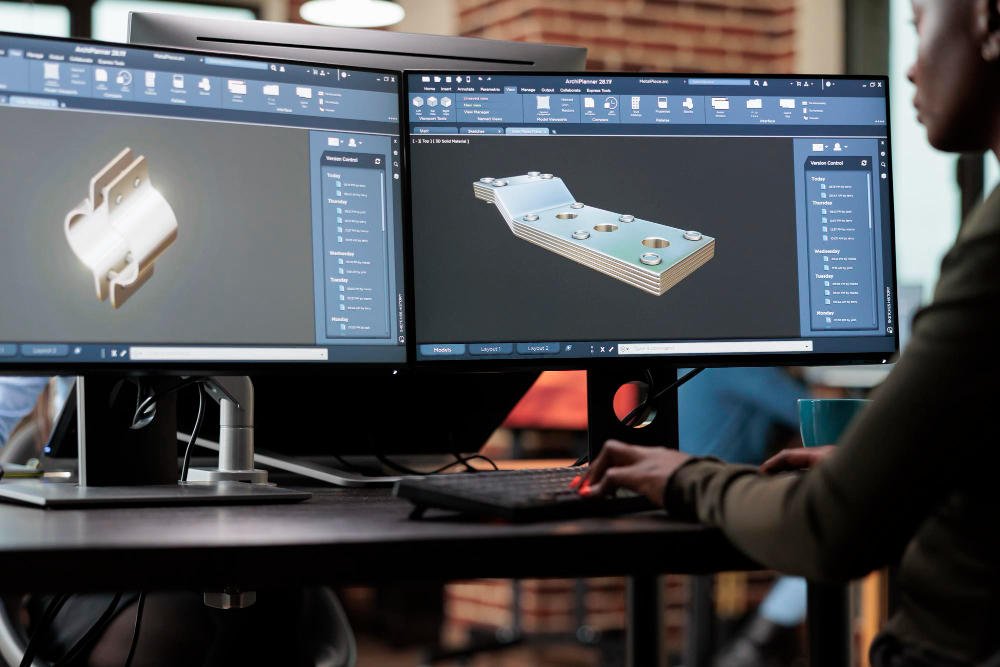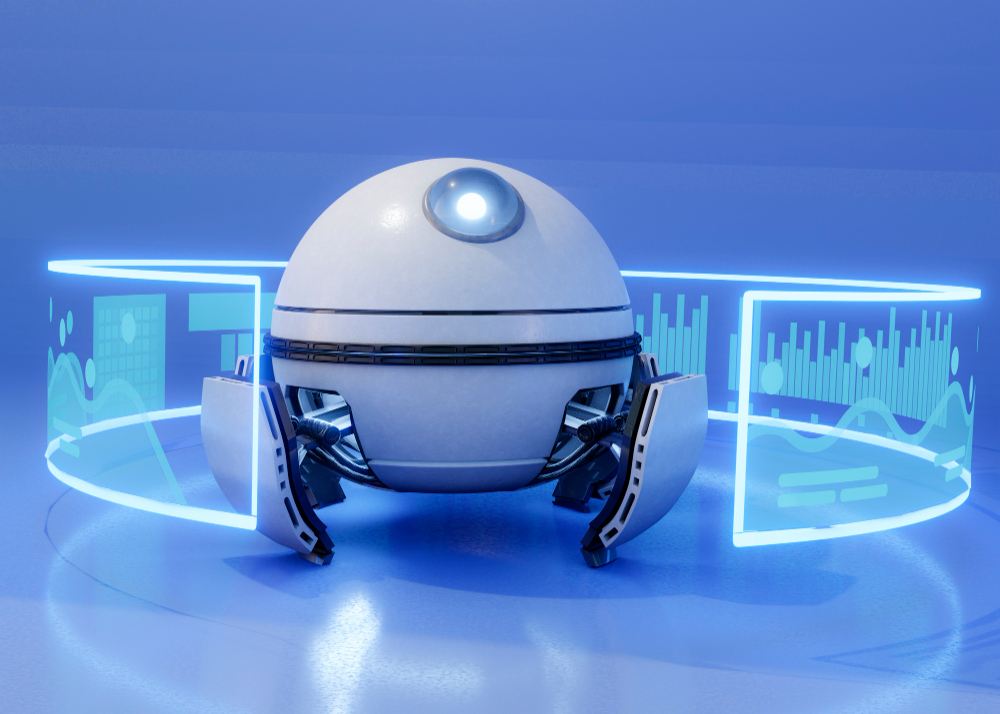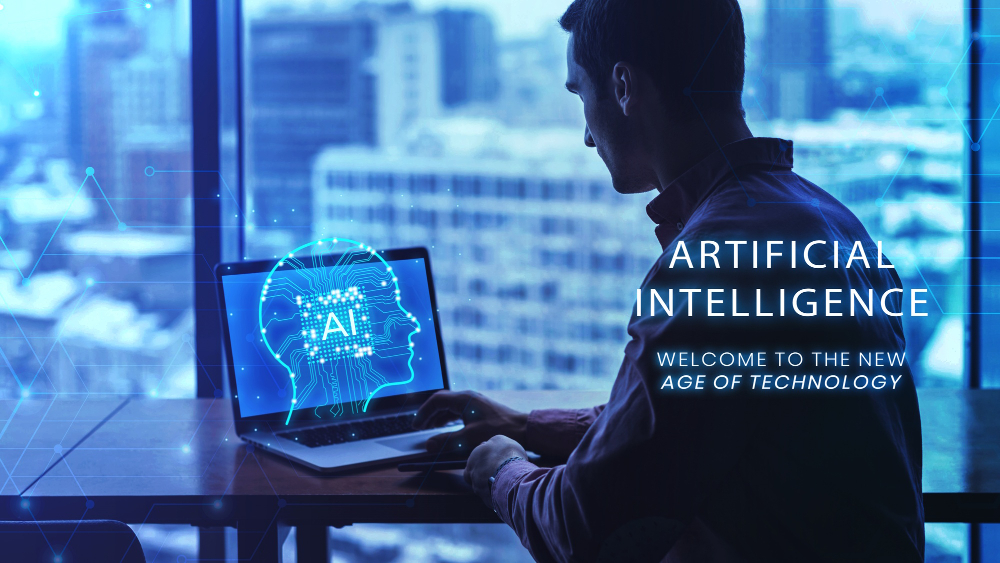Ever wondered about what exactly AI 3D model generators are? What do they do and how do they function? We have already witnessed how artificial intelligence (AI) continues to push boundaries in the world of technology. One fascinating application of AI is in 3D model generation, where algorithms create amazing 3D representations of objects, scenes, or characters. AI 3D model generator is the newest development in this field which is making the 3D modeling process more efficient. It is now possible for designers of all expertise levels to create striking 3D models in just a matter of time.
In this blog post, we’ll look at what AI 3D model generators are, their features and how exactly they function. So, read on if you want to know more about AI 3D model generators.
Understanding the Basics
Before getting into how artificial intelligence (AI) generates 3D models, it’s essential to establish a fundamental understanding of the concept. In simple words, 3D models are digital representations of objects or environments, capturing the relationships, textures, and shapes found in the physical world. Traditionally, the creation of these models relied heavily on manual design skills that demand time and resources. This approach undoubtedly limited the speed and scalability of 3D model production. However, the advent of AI has changed this process by introducing automated generation techniques, resulting in the creation of 3D models faster, more efficiently, and more accurately.
AI has changed the traditional workflow by using advanced algorithms and machine learning models that can analyze vast datasets of 3D objects. Through the training process, these algorithms learn the intricate patterns, structures, and features present in diverse 3D models, enabling them to generalize and apply this knowledge to generate newmodels. This automation not only accelerates the production timeline but also democratizes access to 3D modeling, as individuals without extensive design expertise can now use the power of AI 3D model generators to create 3D models.

Data as the Foundation:
Data is an essential requirement for any artificial intelligence (AI) system to function. This idea also applies to AI systems that generate 3D models. These complex systems go through training procedures with large datasets that include a wide variety of 3D models. This carefully chosen set of data acts as the AI’s manual, instructing it to recognize complex structures, patterns, and characteristics that exist in different objects and settings. The level of quality and variety of the training data that an AI 3D model generator comes across directly affects how effective the generator is.
The AI’s skills are significantly shaped by the training data. Exposing the system to a wide range of 3D models—from simple geometric shapes to complex, multi-layered structures—allows the AI to generalize and identify the basic concepts underlying the depiction of 3D objects. The diversity and accuracy of the 3D models generated by the 3D asset generators are enhanced by the depth of the dataset, guaranteeing their adaptation to various applications and environments. Therefore, the choice and selection of the training data play a crucial role in defining the overall effectiveness of the AI 3D model generator as well as its ability to produce results that accurately capture every detail of the real world.
Neural Networks and Deep Learning:
Neural networks, with a focus on deep learning architectures, are the key components of many AI 3D model generators. These systems are driven by deep learning, which enables AI to automatically extract layered representations of features from the input data. When it comes to 3D model creation, these neural networks are essential for examining and understanding the positional links, textures, and forms that are present in the training data.
In this case, deep learning involves building neural networks with enormous datasets of 3D models. The neural network gains the ability to recognize complex patterns and structural complexities found in a variety of objects and settings through an iterative refinement process. Deep learning’s hierarchical structure enables the AI to gradually draw higher-level features. In order to generate 3D models, the ability of the AI to automatically extract accurate depictions from the input data is essential because it gives the AI the tools it needs to comprehend and replicate the minute details t. Neural networks and deep learning are essentially the foundations of technology that enable AI 3D models generators to increase their processing of the multidimensional world.
Generative Models:
Generative models play a vital role in 3D model generation within the vast field of deep learning. Among these, Variational Autoencoders (VAEs) and Generative Adversarial Networks (GANs) stand out as major participants. By absorbing the training data’s underlying distribution, these complex algorithms are skilled at producing fresh, real data samples. More specifically, these generative models use the information that they have learned during training to create realistic 3D models.
The dual-network structure of Generative Adversarial Networks (GANs) consists of a discriminator and a generator. The discriminator evaluates the authenticity of the 3D models produced by the generator, which aims to produce ones that are identical to genuine ones.
Again, Variational Autoencoders (VAEs), an encoder-decoder design, reconstructs these representations into realistic outputs after the encoder has learned to represent input 3D models in a compact latent space. By utilizing a random component, VAEs enable the creation of various 3D models through sampling from the latent space.
Real-time Applications of AI 3D Model Generators:
AI 3D model generators play a pivotal role in revolutionizing real-time applications, offering capabilities for simulations and interactive experiences, particularly in the gaming and virtual reality (VR) industries.
AI 3D model generators give game creators the ability to construct dynamic, responsive landscapes that respond in real time to player activities in the gaming business. The size and complexity of virtual worlds are constrained by the tedious hand creation of 3D assets . Developers can now create complex characters, objects, and landscapes automatically based on user interactions because of AI. This keeps gamers interested as they explore constantly changing virtual worlds by adding an element of surprise and enhancing the visual variety of the gaming experience.
Furthermore, AI 3D model generators’ real-time capabilities are significant in the field of virtual reality. For virtual reality to be genuinely immersive, it must possess a high degree of realism and interactivity. AI makes it easier to create realistic, complex 3D models that react to human movements and activities instantly. Whether it’s taking part in a simulated training scenario, touring a virtual museum, or taking part in architectural walkthroughs, the real-time creation of 3D models guarantees that VR settings stay lively and responsive, giving users a greater sense of presence and engagement. An advancement in the creation of more engaging and dynamic digital experiences is the smooth integration of AI-generated 3D models in real-time applications.

Additional Techniques:
Here are some additional techniques that AI 3D models utilize that can help creators and designers to build the best 3D models.
Text to 3D:
Firstly, AI can convert textual descriptions into detailed 3D models. This allows for the creation of objects or scenes based on written instructions, expanding the accessibility of 3D modeling to those who may not possess traditional design skills.
2D Image to 3D:
Secondly, through advanced computer vision techniques, AI can transform two-dimensional images into rich 3D representations. This capability is valuable in fields like art, design, and animation, where turning flat images into immersive three-dimensional experiences is crucial.
3D Point Cloud to Mesh:
Another technique includes 3D pint cloud to mesh. AI can process point cloud data, commonly obtained from LiDAR or 3D scanners, and convert it into cohesive 3D meshes. This conversion enhances the usability of point cloud information in various industries, including robotics, urban planning, and autonomous vehicles.
Volumetric Video Reconstruction:
Utilizing AI, volumetric video reconstruction involves converting 2D video footage into fully realized 3D scenes. This technology is particularly beneficial for applications in virtual reality, filmmaking, and teleconferencing, providing a more immersive and interactive visual experience.
Parametric Design Optimization:
Lastly, AI-driven parametric design allows for the automated exploration and optimization of 3D models based on predefined parameters. This technique streamlines the iterative design process, making it efficient for architects, engineers, and product designers seeking optimal solutions in terms of aesthetics, functionality, or structural integrity.
Application Areas:
AI-generated 3D models are having a significant impact on a wide range of industries. The potential of these models greatly benefits industries like virtual reality experiences and video game production. AI-generated 3D models are used in video games to create active scenarios, lifelike characters, and realistic settings that improve gamers’ overall gaming experience. Similarly , these models are essential to creating realistic virtual worlds in virtual reality apps, which let users interact with engaging and real-life simulations.
Another area where AI-generated 3D models have had a significant impact is architectural design. The capacity to quickly generate complex and lifelike architectural renderings helps architects and designers in their creative processes by making it easier to conceptualize and visualize structures.
Moreover, AI-generated 3D models are helpful in the field of medical imaging. These models improve the comprehension and planning of medical practitioners by simulating surgical operations and presenting intricate anatomical elements. Diagnostics, treatment planning, and medical education are all aided by the capacity to create intricate 3D reconstructions from medical imaging data.
Furthermore, AI generated 3D models are perfect for marketing campaigns where special models suitable for the brand are required. These models can be useful in the advertising sector as well to showcase the products and services the best way possible.

Conclusion
The advent of AI 3D model generators marks a change in technology. AI facilitates the quick generation of complex and lifelike 3D representations by automating the 3D modeling process with sophisticated algorithms, machine learning models, and generative techniques. The ability of AI 3D model generators to create dynamic and compelling experiences is demonstrated by real-time applications, especially in the gaming and virtual reality industries. AI-generated 3D models are more widely accessible and useful when combined with other approaches like text-to-3D, image-to-3D, and parametric design optimization. With significant impacts across industries, from gaming and architecture to medical imaging and marketing, AI 3D model generators demonstrate their versatility and potential to change how we conceptualize, design, and interact with the multidimensional world. Be a part of this journey with 3Daily today.



